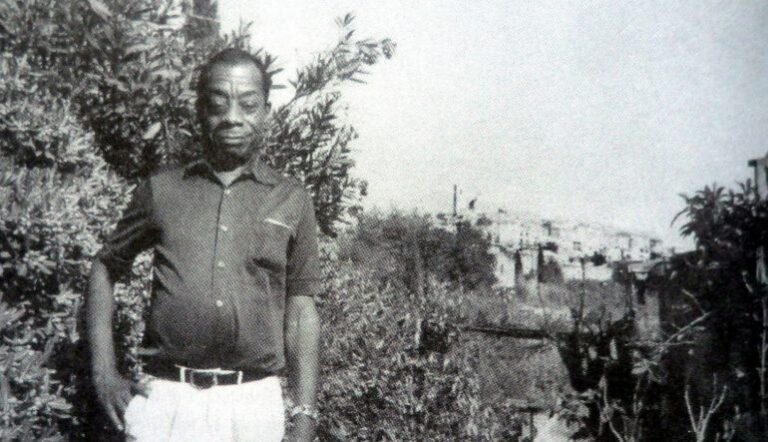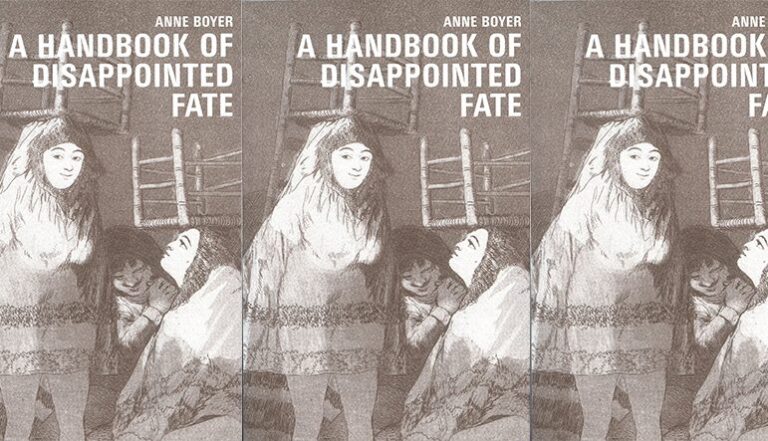Lungfish’s Exploration of Isolation

The Rumpelstiltskin effect, in psychotherapy, refers to the power of naming a problem. Naming something implies it can be understood, perhaps even brought under control. In Meghan Gilliss’s debut novel, Lungfish, out today, Tuck seeks to escape her problems by squatting with her husband, Paul, and toddler, Agnes, in her late grandmother’s cabin on an uninhabited island off the coast of Maine. But those problems, foremost of all Paul’s opioid addiction, follow the family to the island, where they must be named in order to be understood, much like Rumpelstiltskin—the impish antagonist of Agnes’s favorite fairy tale. Told in lyrical, first-person fragments as lush, brutal, and self-contained as the island itself, the novel’s remote setting occasions an extended study of isolation—the isolating effects of early motherhood, of food scarcity and substance use, and finally, of secrets kept from one’s self and loved ones.
Making a life on the island is a matter of survival, and the cabin is only a temporary shelter—the executor of Tuck’s grandmother’s will could evict them at any moment. Upon arrival, Paul begins to experience withdrawal symptoms. He maintains a careful distance from Tuck and Agnes, sleeping on the couch, then retreating to the privacy of the bedroom in the morning. They do not speak of these conditions—neither Paul’s physical symptoms nor his distance—and it becomes one of the many fragile silences Tuck keeps.
Told in a non-linear structure, fragments fill in Tuck’s backstory and reveal that keeping quiet is a skill she learned from her family of origin. Of the tense period before her mother left, Tuck recalls, “Her life among us was a delicate thing my brother and father and I protected by saying nothing. We knew any word might be the last stone—the one to send the birds up and away for good, landing beyond our sight.” Abandoned first by her mother, then her father, Tuck sifts through the childhood memories that wash ashore her consciousness like the Irish moss she gathers from the island’s beaches following a storm.
Paul begins taking the dory ashore to seek work on the mainland, though he returns irregularly and, often, without money, fuel, or groceries. Even so, on the island Tuck discovers that one of her fears about motherhood is unfounded. She is capable of being alone with Agnes, as well as finding satisfaction in it. At night, Agnes asks Tuck to read “Rumpelstiltskin” from an old translation of Grimm’s Fairy Tales found in the cabin. Agnes accepts the story without question. Tuck reflects, “She might as well be a snake digesting a rat. I can see the story moving through. I just can’t see what she’s doing with it.”
This comment is indicative of Tuck and Agnes’s relationship. It demonstrates the tenderness with which Tuck attends to Agnes’s development, but it also reveals how, despite the intensity of the parent-child bond in early motherhood—a relationship that even in less extreme circumstances can feel a bit like an island—some things remain unknowable. Further, Tuck’s comment suggests that a certain inscrutability is a trait that mother and daughter share. Despite the force of the novel’s first-person narration, Tuck is, at times, unknowable and unwilling to know. Readers can see the events of the novel moving through her, but it’s not always clear, especially at first, how Tuck is metabolizing these events. This inscrutability is, in part, what gives the novel its suspense. What will Tuck come to know over the course of the novel, and what will she do with that knowledge?
“I was late to so much knowledge,” Tuck states plainly and ominously in the novel’s opening pages, an instance of hindsight breaking into the narrative’s present tense. The novel’s lyricism evinces what Virginia Tufte calls “syntactic symbolism,” in which a sentence’s syntax performs its meaning. Frequently, Tuck’s syntax suggests that she is reluctant to reveal some truths, even to herself. Meaning unfurls slowly like the fronds of a fern. In a flashback to childhood, this one about her father’s failed scheme of selling customizable bumper sticker kits, Tuck remembers, “I was dreaming about assembling the kits—my hand couldn’t make the hole-puncher work—when Mom did it. When she left.” It’s as if it takes Tuck several attempts to state the fact of what happened, to name it.
When Tuck and Agnes visit the mainland, it’s to use a computer pass at the public library to look for a rental apartment, to search for a job Tuck can “do with a child on her hip,” and to email the executor. In an entrepreneurial move born of desperation, Tuck sells her father’s old bumper sticker kits, which she finds stored at the cabin, in an attempt to scrape together a rental deposit. The result is that bumper stickers punctuate the novel, sometimes to humorous effect, and become an exploration of what can be said with few words. When Tuck discovers the kits, she makes her first bumper sticker in fourteen years. It says: “W-H-A-T-T-H-E-F-U-C-K.” Later, she writes poetry and cryptic messages to herself and Paul in bumper stickers. “DO YOU REMEMBER YOU?” she asks. When she visits the small village on the mainland, she sees that people have bought and made bumper stickers with her kits, using them to broadcast political messages like UNSTABLE ATOMS OUT OF THE HANDS OF UNSTABLE MEN.
On the island, Tuck is cut off from communication from the mainland except for a generator-powered radio, but Tuck limits its use in order to conserve fuel. In the absence of other conversation partners, Tuck searches for answers to her problems, past and present, in her grandmother’s field guides, religious texts, poetry collections, and mystery novels. Though Tuck isn’t religious, she ponders her grandmother’s Christian faith and turns to texts that illuminate her search for meaning. After reading about the pagans St. Boniface converted, for example, Tuck asks, “How quickly were they absolved of their sin of blindness? Did it matter much how willful it was…Does the concept of innocence become moot in the rush to escape, to survive?” Her questions about the pagans expose her fears. What does she need to see clearly in order to save herself and her child?
In the pages of her grandmother’s books, Tuck finds much to ruminate over as she seeks to make sense of Paul’s absences and ailments, of their financial troubles and food insecurity. She also finds sustenance. The field guides teach her to name the island’s flora and fauna, and, therefore, to forage for survival—knowledge that Tuck passes on to Agnes, which makes for some of the novel’s most luminous and deeply affecting scenes: “I show Agnes how to make the seeds of the jewelweed pop off with the touch of a finger. I let her feast on the soft orange petals while I scan the sparkling bay…Just irrelevant boats, far away, moving about in a world that doesn’t overlap with ours.”
Together, they search for crabs, bladderwrack, mussels, and devil’s tongue, they place bowls in the yard for rainwater, they gather whatever gifts the island offers each day, and some days they return to the cabin empty handed and hungry. Over the course of the novel, Tuck’s hunger grows as she offers what little food she finds to Agnes. Hunger is a physical presence that pounds at Tuck’s skull, that fogs her brain. She notes wryly, “I feel the feeling that is like my brain is being used for fuel.” But despite the persistent physical sensations of hunger, Tuck doubts its validity since Paul does not share her preoccupation with procuring food. Her codependency means she is willing to deny even what she viscerally knows to be true.
Paul is uninterested in the island’s books, a loss that is depicted by flashback. When they were first dating, Paul would read aloud to Tuck. This moment of early intimacy occurs before Paul comes to resent Tuck for being consumed with Agnes’s care, before Tuck becomes financially dependent on Paul, before Paul’s substance use begins. While reading to Tuck, Paul voices his excitement over the plot. “Don’t you see what’s happening here?” he asks. But Tuck says she prefers not to see what’s happening, prefers a kind of willful ignorance, saying, “It was enough to let it happen, on its own—the unraveling toward an inevitably devastating end, without my seeing the machinations of it.” It’s a statement that’s as revelatory about Tuck as a reader as it is about Tuck as the protagonist of her own life. In the present, as Tuck learns to read the island—its tides and currents, its cycles and storms—in order to survive, she learns to read her life. After fashioning a windsock out of some torn yellow sheets, Tuck remarks, “We’ll be able to see it, from the dock. We’ll be able to see what’s really going on.”
It’s William Blake’s “The Tyger” that first affords Tuck the language to name Paul’s addiction. There’s a powerful scent that clings to Paul, which smells of musk and rot and other things she doesn’t understand. Initially, she considers that it might be the scent of their apartment’s former tenant or of a woman Paul has become involved with, but when the scent follows them to the island, she becomes determined to identify it. She begins to refer to its source as the tyger. She tracks the scent down the cabin’s damp hallway to a framed nautical chart of the bay. Tuck points her finger to it, locating herself on the island. When she pulls the frame from the wall, little pink baggies labeled, kratom. It’s fitting, of course, that Paul has concealed his secret beneath a map of the island and the deep waters of the gulf. She makes notes of the labels and quantities and researches the substance, learning that some people use it to manage opioid addiction but kratom is itself often laced with other substances. Tuck posts to anonymous message boards, desperate to prove to herself that she isn’t alone in facing Paul’s addiction to kratom and whatever else he may be using.
When Paul’s substance use poses a grave threat to Agnes’s well-being, Tuck finally escapes the island. Much like in the fairy tale Rumpelstiltskin, it’s her desire to save her only child that motivates Tuck to take decisive action. Only with distance does she begin to suspect that, rather than relocating to the island by choice, Paul had lost his job, that perhaps they’d been evicted from their apartment in Pittsburgh. Tuck begins the process of rebuilding her life, albeit on another island, though this one is populated. In the end, Paul’s substance use can be neither made sense of nor brought under control, at least not by Tuck, even as she processes her experiences at what can be understood to be an Al-Anon meeting. No longer isolated, in the company of others, Tuck finds support enough to name what needs to be named.


